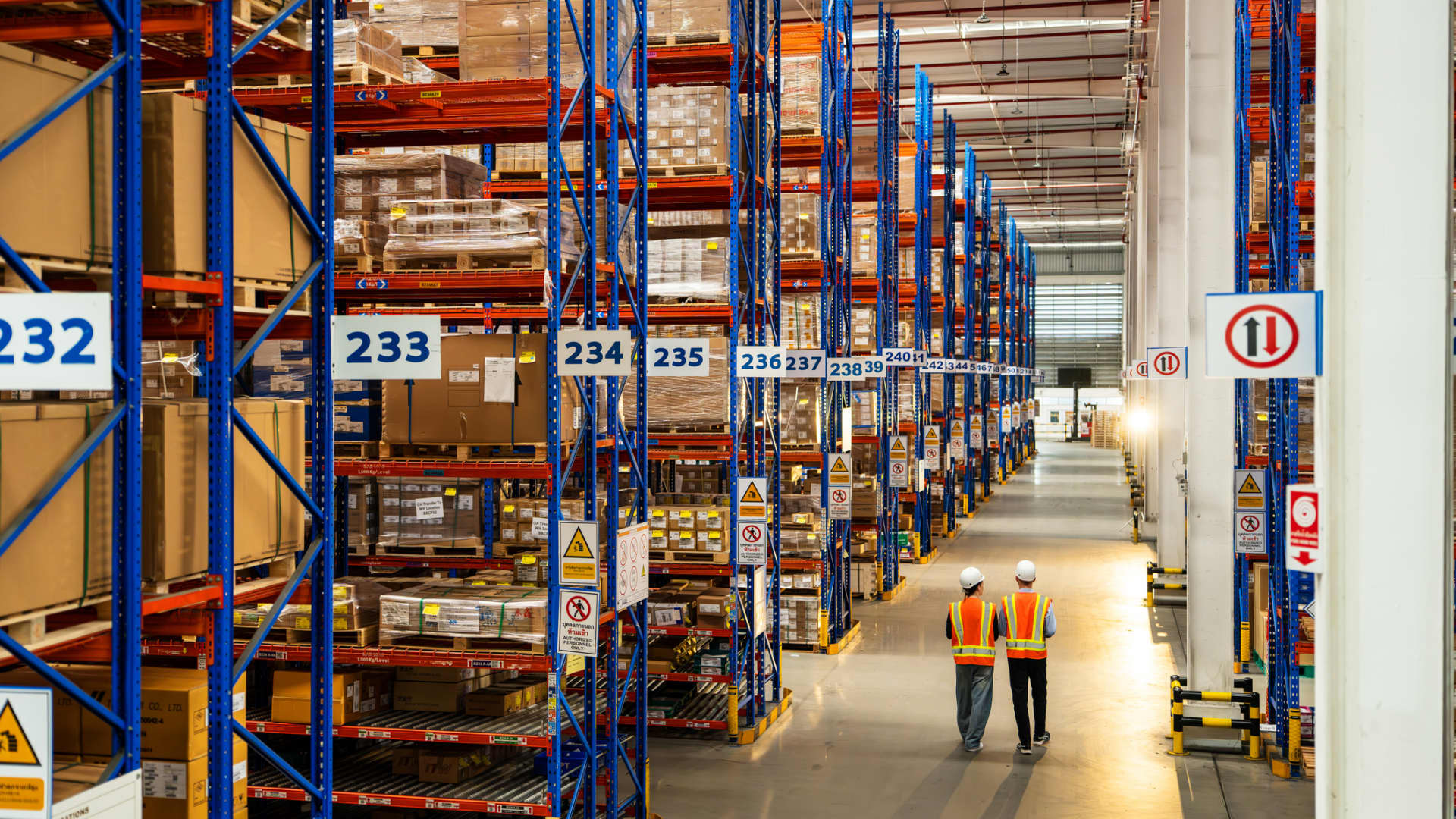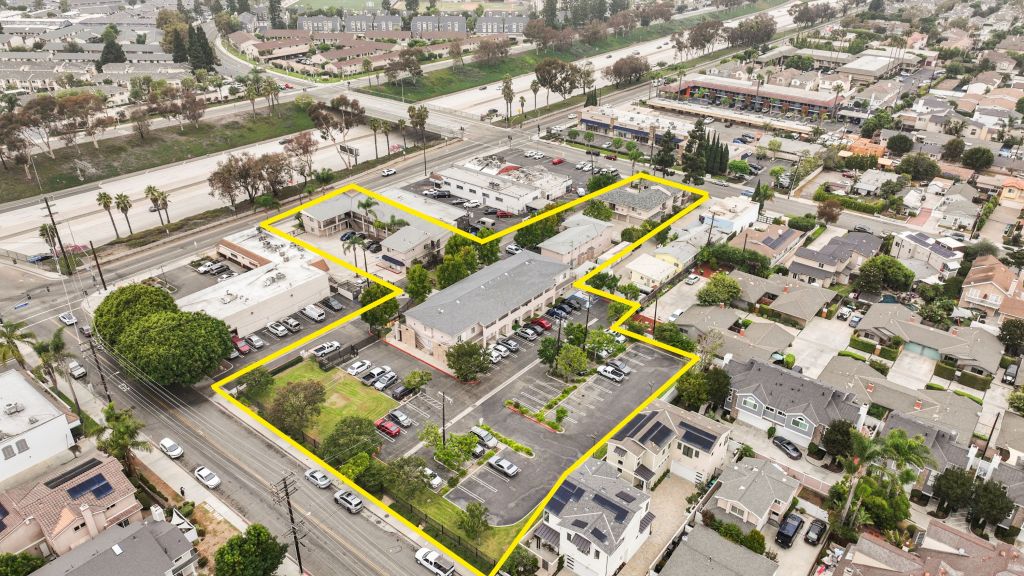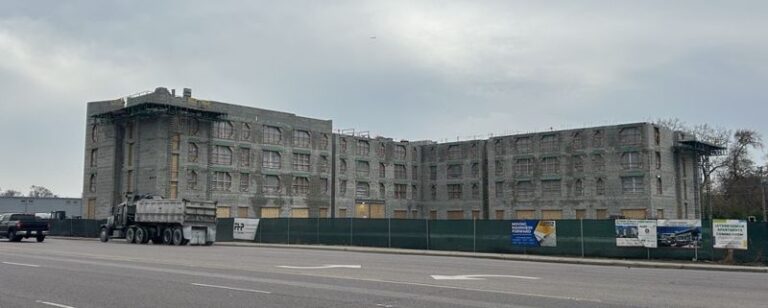A
sprawling industrial warehouse is lined with stacked shelves of packages, while two workers in safety gear walk through, inspecting the storage. The layout showcases efficient, systematic inventory management.
After a pandemic‑driven boom and subsequent pullback, warehouse supply and demand are finally balancing. E‑commerce remains a key driver, but more retailers are returning to physical stores. Tenants now prioritize efficiency, power, and location over sheer square footage. New construction has slowed, and federal onshoring policies help offset high interest rates and economic uncertainty. Rent growth has moderated, and in some markets it is even falling slightly due to excess supply.
Judy Guarino, JPMorgan Chase’s managing director of commercial mortgage lending, notes that “industrial property rents are showing signs of stabilization, indicating a more balanced market environment.”
**Big‑box subsector**
Large, modern distribution hubs—about a quarter of U.S. industrial space—are nearing cyclical vacancy peaks. New construction is contracting. In the first half of 2025, new supply still outpaced demand, but the gap narrowed. Third‑party logistics firms such as Ryder and DHL are the main drivers of demand. Colliers reports a 19‑basis‑point rise in vacancy to 11% across the 20 largest markets, with 48 million square feet of new supply versus 330 million in 2023. Rents are expected to stabilize before rising again. Demand from online retailers and supply‑chain efficiency remains strong, though tariff and economic policies have dampened it. Lower rates could revive the sector.
**Supply‑chain trends**
Prologis predicts that e‑commerce will account for nearly 25 % of new leasing next year as global online sales approach 20 %. Power‑ready logistics facilities that support automation will be a top‑three location factor worldwide. Defense demand in the U.S. and Europe will rejuvenate older industrial corridors, creating a new class of specialized logistics assets. Shrinking trucking capacity will push rates up, making transportation a larger share of supply‑chain spend and boosting the value of well‑located logistics real estate.
**Power and reshoring**
Hines reports that power availability and network densification are becoming key pricing catalysts. Reshoring correlates strongly with warehouse net absorption; it could raise overall demand by roughly 35 % over the next five years. Industrial properties near ports remain critical for supply‑chain resilience, even amid tariff‑driven cost increases.
**Proximity and Amazon’s strategy**
Amazon’s logistics real estate strategy reflects a national shift toward efficiency, automation, and consumer proximity over sheer scale. CoStar notes that Amazon’s footprint has dropped from 300 properties in recent years to just 61 this year, with a seven‑year low in demand for large footprints. The company still prefers newer, taller buildings that support modern, efficient distribution centers.
**AI and proptech**
Artificial intelligence and property technology are reshaping the warehouse sector. They help owners analyze supply chains, traffic patterns, and data to identify optimal locations, manage inventory, and predict maintenance needs, thereby reducing costs.













